A snowy round through the Minato Inari Jinja 湊稲荷神社 👹🍣🎎 Wonderful Japan
This year's winter may not officially be over yet, but on some days in February we already felt a bit of a spring mood. Temperatures have been fluctuating quite a bit and every now and then you can almost forget that we are actually still in the cold season. Especially because winter has brought much less snow this time than in previous years, when life in our city sometimes seemed to come to a standstill. Snow is both a joy and a sorrow, and as much as I would like to see a white wonderland one more time, I also dread driving in snow and ice.
But as I mentioned, snow also has a fascinating side that can really inspire us. When the city and countryside are covered in a blanket of white, our surroundings sometimes seem like something out of a fairy tale. Dreamy and enchanted and yet so mysterious.
And with a little snow, places and shrines in particular can appear even more bewitching and charming than they already do. The white snow covers and suppresses most of the other colors, so that the remaining ones seem all the stronger and clearer. In particular, the bright vermillion red found in many shrines now stands out all the more and sometimes even seems to glow.
During one day of the last winter, we were out in the town and we were passing one of our many shrines. I suddenly felt that didn't just want to drive past this local but well-known shrine, but that I should at least take a quick look. The scenery in front of me seemed too attractive as that I couldn't ignore it. On the contrary, even with only a little time, I didn't want to miss the opportunity to take a short tour of the shrine grounds. Luckily, I had my camera with me, so as usual I took a lot of photos, which might help me to give you a better idea of the atmosphere of the place.
So just sit back, relax and come with me on a tour of the Minato Inari Shrine...
The Minato Inari Jinja 湊稲荷神社 is located in the older part of Niigata city, very close to the mouth of the Shinanogawa River into the Sea of Japan, where in earlier times the old harbor facilities were located. The word Minato 湊 also translates as harbor, and some of my blog readers may already be familiar with the word Inari 稲荷, as it refers to the popular deity Inari.
The origins of Minato Inari Jinja date back to the Edo period in the early 18th century. During this period, the shrine was already popular with the sailors of ships arriving at the port of Niigata, who came here for worshipping. After Japan opened up in the second half of the 19th century and in accordance with the trade treaties of the time, the ports of Hakodate, Nagasaki, Yokohama, Hyogo, Osaka and Niigata were allowed to be used for international trade. At that time, the first customs houses were also built in these cities. These European-style buildings were a surprise to the Japanese at that period, and the restored customs house of Niigata can still be seen near the shrine.
This led to a further upgrading of the city, its harbor area and also the Minato Inari Shrine, which is still visited by many people today, even though the modern harbor facilities of the modern era are now located outside of the city.
One of the special features of the shrine can be seen here. Here too too you will find two komainu, as the stone guardian dogs are called, but the special thing about them is that you can rotate them. There is one Komainu on each side of the entrance area, whereby women should rotate the left and men the right one.
If you turn the Komainu while saying a prayer, the wish you have in mind is said to come true. Supposedly, depending on the weight and importance of your wish, you sometimes need more and sometimes less strength to turn the stone lion dog. But unfortunately, wishes are always a tricky thing. For me, it usually doesn't seem to work out that way, that my wishes actually come into reality.
We now approach the main building and come across the first small fox statue, which stands right next to a red lantern. As mentioned, Inari is the deity of foxes, but she is also responsible for rice planting and harvesting, prosperity and business success, as well as general well-being. Inari is usually regarded as a female deity and there are almost 3000 shrines dedicated to her throughout Japan, a few of which I have visited over the years.
Now we are already in the entrance area of the main building, which in winter is additionally protected from the wind and weather by large sheeting. Here you will find the usual talismans and lucky charms, which can be purchased in most of the large shrines.
Some lucky charms are taken home as talismans and always kept with you, while on others you write your wish and hang them up here in the shrine. A little superstition is part of all religions and above all the hope that you can easily influence your own fate and give it a nudge in the desired direction.
As in most shrines and temples, here at Minato Inari Jinja red was the dominant color. From the toori, the striking entrance gates, to the lanterns, banners and decorative elements, red was everywhere. On the one hand, this color stands for power and energy, but at the same time it is also said to keep away evil and demons. Well that i what everyone says, and people seem to believe in it.
Looking up, we also see some bells and chimes hanging from long ropes and cords, which are rung after saying your prayers. Even though there is actually a fixed procedure for praying in Japanese shrines and temples, I've noticed time and again that most people have their own particular way of praying. Maybe people don't pay attention when this was explained but in the end, nobody really cares how you do it.
The many small red paper fish hanging under the ceiling as decoration were also quite striking. These were also talismans that could be purchased and were supposed to protect you from bad luck. Especially in the larger shrines and temples, lucky charms are a big deal and you can buy them for all kinds of situations. For exams and business, but also to protect you from illness or when you want to have children - all you have to do is open your wallet and nothing stands in the way of your happiness.
We are back outside enjoying a look around the shrine complex, which made an extremely charming impression that day. It was probably the white snow that really made the red lanterns stand out and shine and gave the whole place a rather contemplative touch.
In addition to the main building, there were also some smaller altars, some of which were also marked by red toori. The shrines I visit always look different depending on the time of year, and I always try to discover new details that I have overlooked on previous visits, even in places that I already know well.
Here we have a small fox statue, with a large tooro behind it, a stone lantern, which is so typical of such complexes. The lower part of the fox statue is covered with small pieces of paper on which visitors have written their personal wishes.
At times, the shrine complex seemed a little overloaded or cluttered, with all the many toori, lanterns, flags and altars. I guess it was because of the limited space available, as the whole area was quite small for such a popular shrine. At the same time, everything here seemed so lively and exciting that it was difficult to know where to look first.
But as already mentioned, the snow managed to give the whole area a rather peaceful atmosphere and some places offered a wonderful sight that could quickly enchant you. For me, it's usually these typically typically Japanese design elements, such as toori and tooro, that fascinate me the most. Like in this corner of the shrine, this row of red lanterns, which were perfectly staged by the white around them.
Unfortunately, I didn't have too much time for my tour through the Minato Inari shrine, but nevertheless, the place left an intense impression on me during my brief visit. Due to the snow, there were hardly any other people here, which seemed to intensify the aura around me. The shadows, which were getting longer and longer, probably also played their part here, and they were a clear evidence of the fact that the days in winter still pass quite quickly.
I resolved to come back here again at another time of year and to explore everything at my leisure. However, my first tour of this lively shrine was extremely stimulating and inspiring and now, as I am writing these lines, I immediately feel like repeating this little tour. I suppose I should wait a few more weeks for spring to show up first. With a bit of fresh greenery and maybe even a few cherry trees in bloom, this place will look at least as charming as it did during my winter walk. Let's see if I can make it here in spring again, because as usual, I already have so many plans of where I absolutely have to go.
If you would like to see more pictures and impressions from the Land of the Rising Sun, please check back here soon. There is still so much for me to see and discover, and so much I want to show you.

[//]:# (!pinmapple 37.93170 lat 139.05463 long A snowy round through the Minato Inari Jinja 湊稲荷神社 👹🍣🎎 Wonderful Japan d3scr)
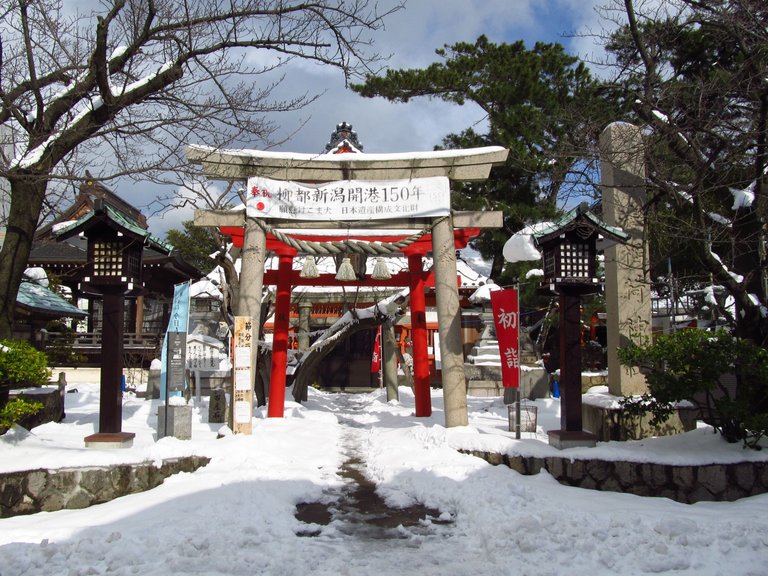
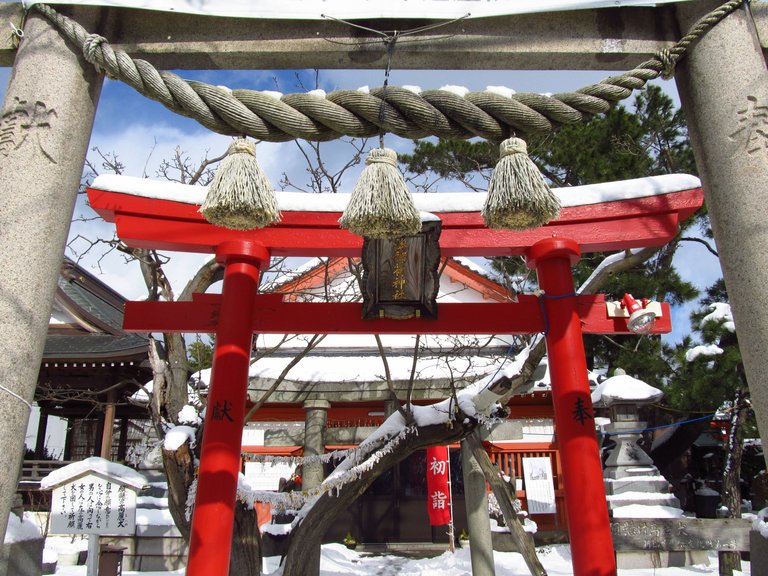
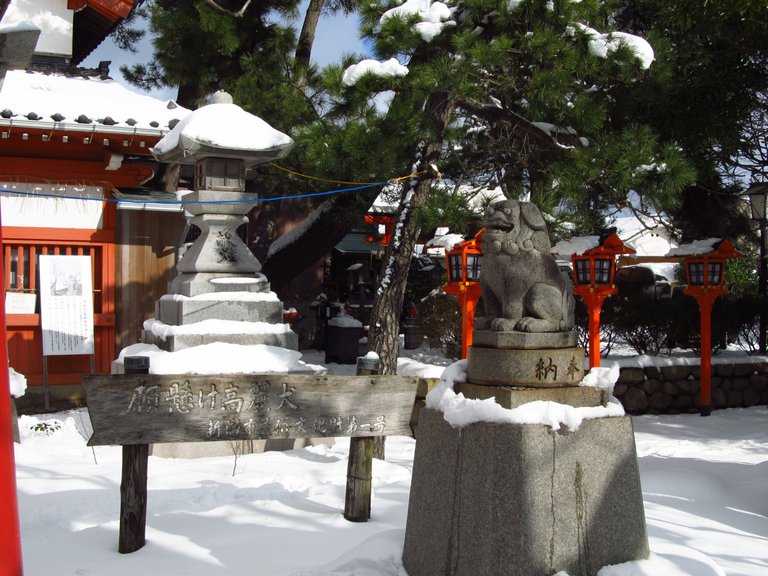
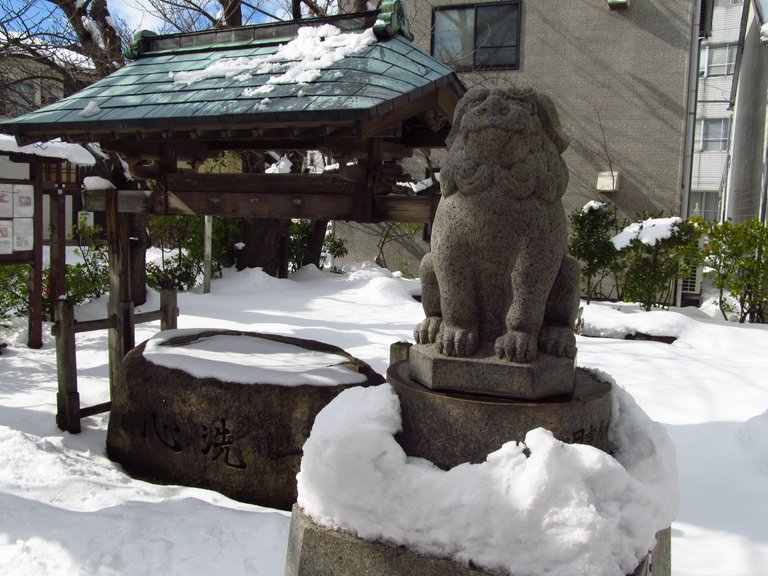
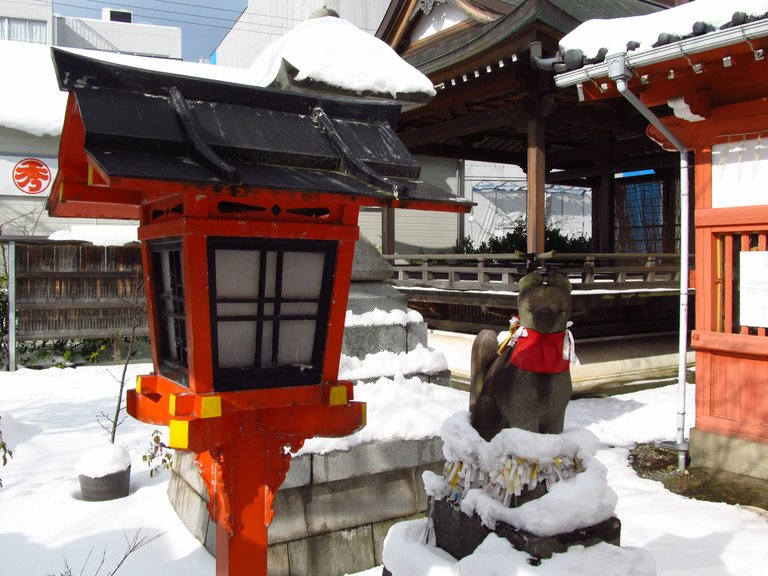
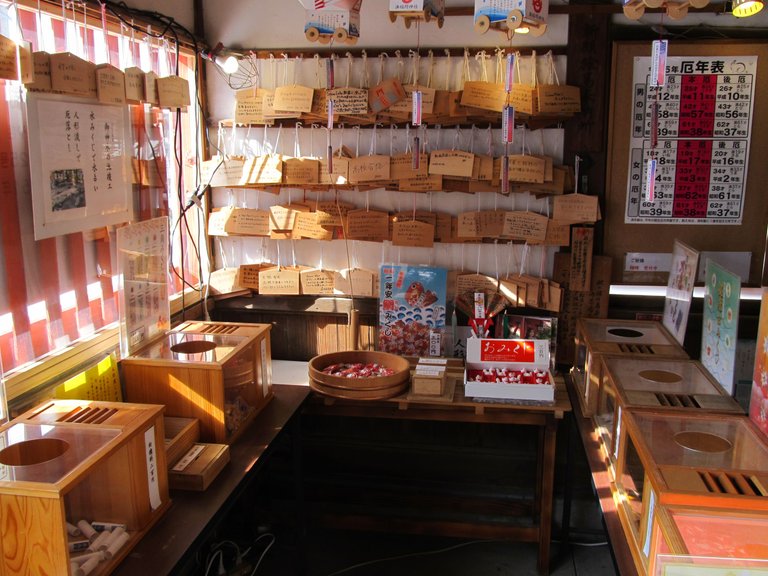
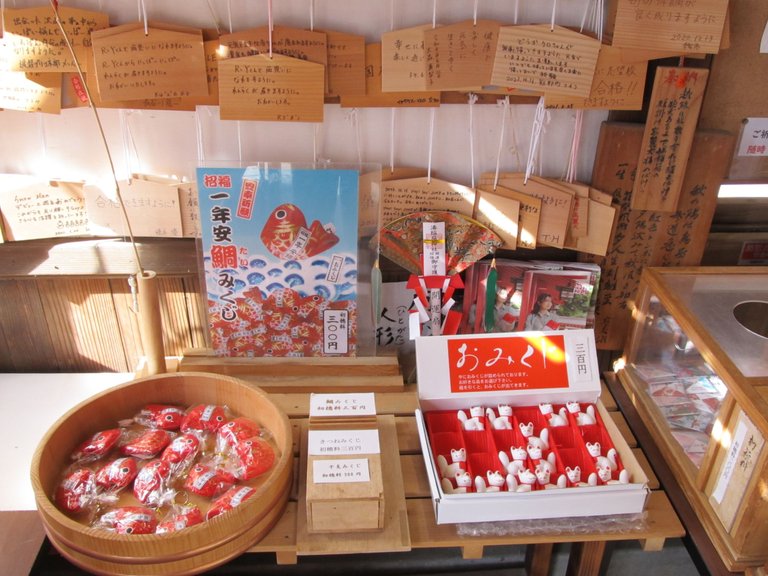

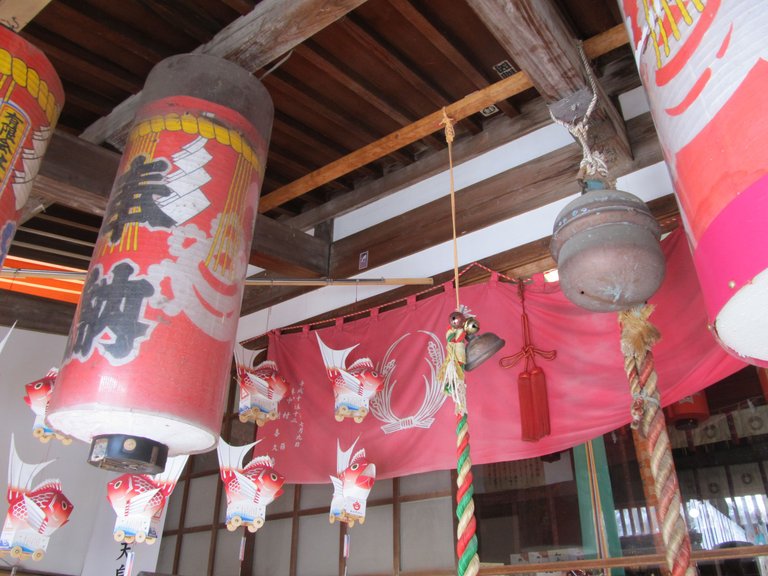
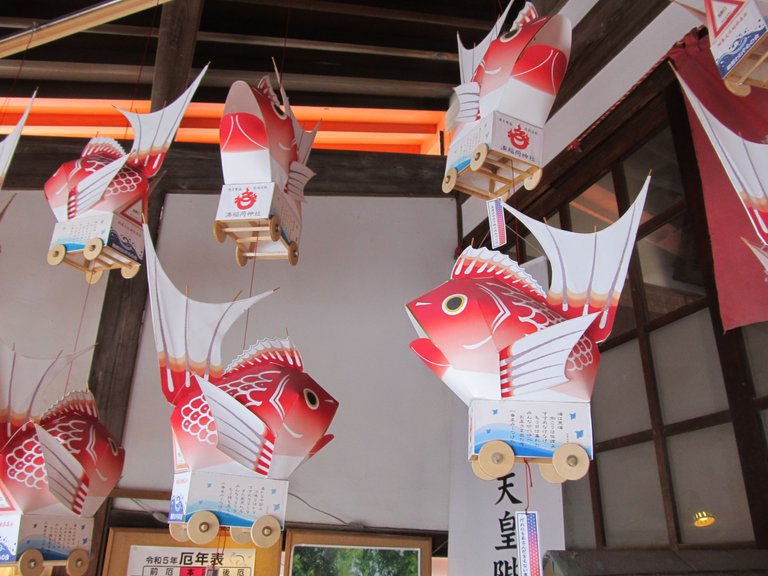
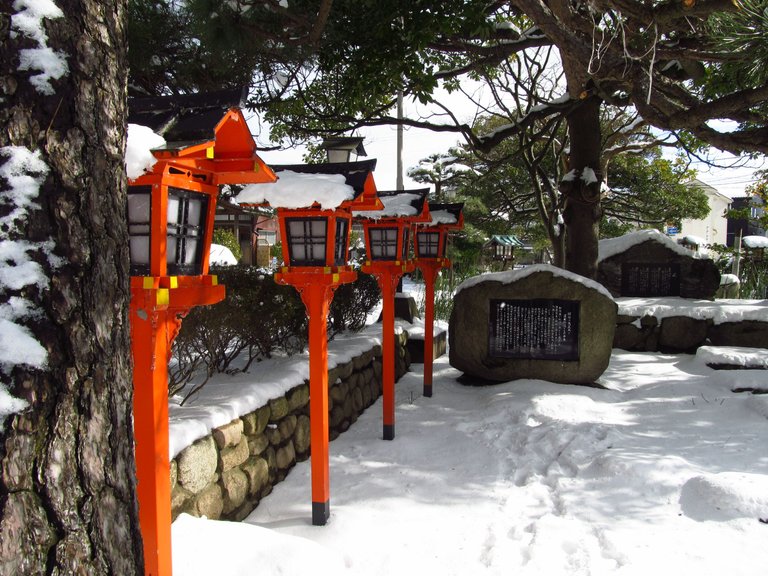
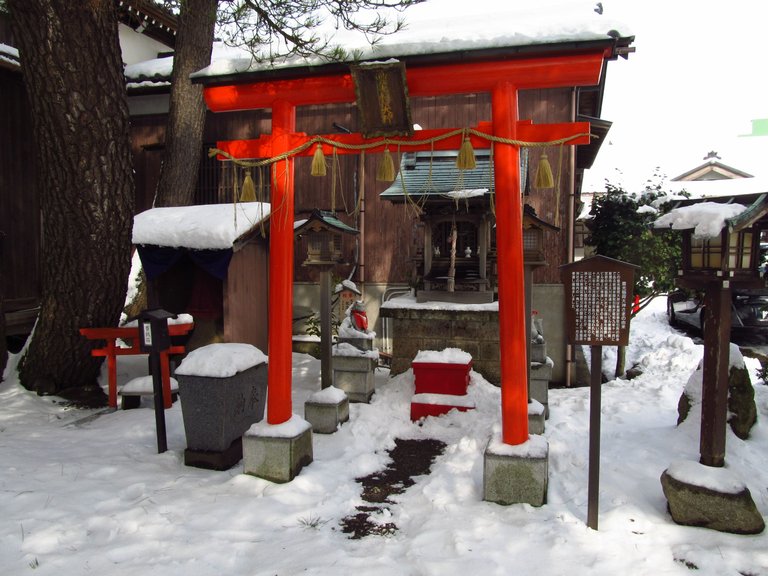
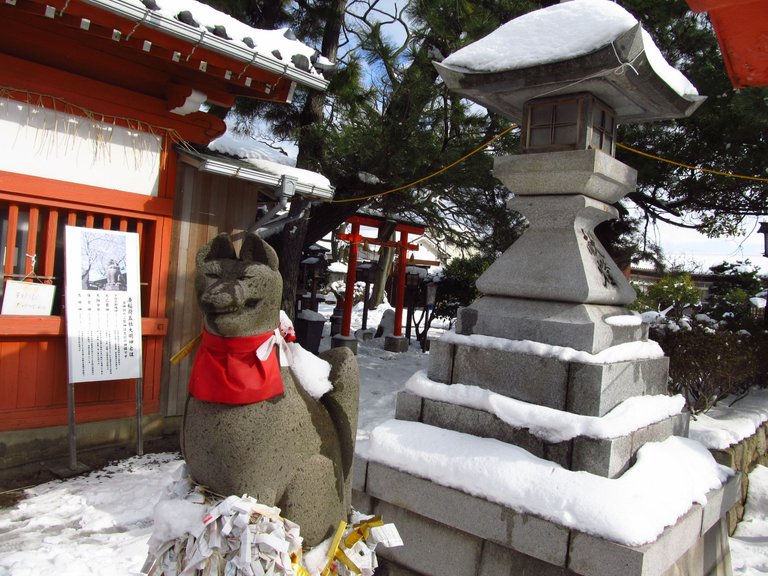

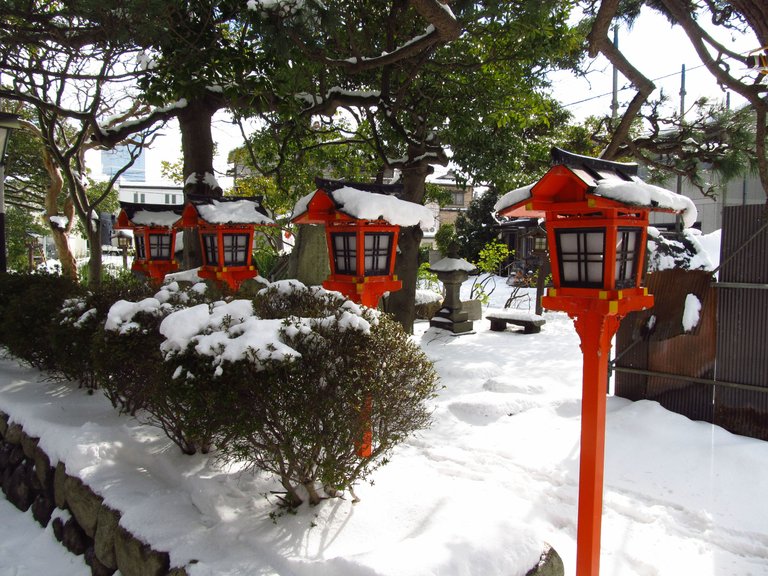
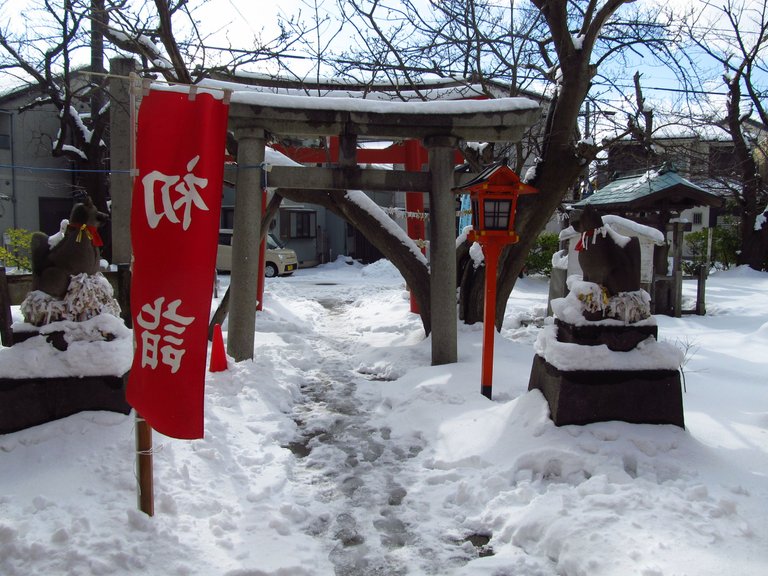

!WITZ
lolztoken.com
Grüne Farbe.
Credit: smooms
@maxinpower, ich habe dir im Namen von @thehockeyfan-at einen $LOLZ Token gesendet
Verwende den Befehl !WITZ oder !LOOL, um einen Witz und ein $LOLZ zu teilen.
Farm LOLZ tokens when you Delegate Hive or Hive Tokens.
Click to delegate: 10 - 20 - 50 - 100 HP
.(7/10)
Congratulations, your post has been added to Pinmapple! 🎉🥳🍍
Did you know you have your own profile map?
And every post has their own map too!
Want to have your post on the map too?